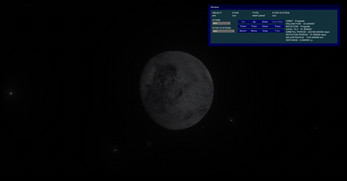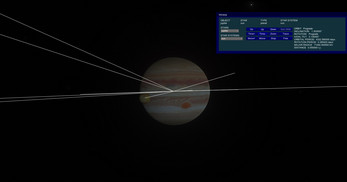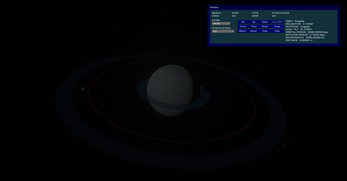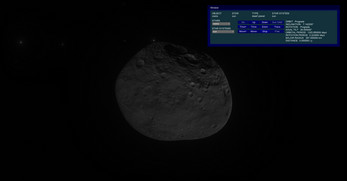Another solar system simulator
A downloadable game for Windows
This is a simulator for the solar system with planets,main dwarf planets ,moons and asteroids and other near stars with some exoplanet.
Dimensions,distances and periods are real,so small objects need to be zoomed in.
All planets,main dwarf planets,moons and asteroids move and orbit.
To see objects move,you often have to speed up time using Time+ button.
There is a window with button and lists,that allows you to control the program.
In the first list we have the stars of the simulator,plus an objet called"_sun",which shows you a map of the positions of the stars in the simulator.
In the second list we have the star systems of the simulator.This list allows you to select,in the first list,only the stars of the selected system,since they can be multiple stars.From this list select "all" to have again all the stars in the star list (first list).
Use mouse for all activities,but use the "up arrow" to get close to an object and "down arrow" to move away from an object.
First,select an object from the first list and then:
- press Go button to to travel to that object
- press Down button to show in the first list all objects orbiting the selected object. They can be moons or planets,this depends on the type of object you have selected (planet or star).
- press Up button to show the object around which the selected object is orbiting and all the objects of the same type.They can be star or planets,this depends on the type of object you have selected (planet or moon or asteroid).For example: i select jupiter,i press "up" and the list shows the sun and all the other stars.
Or again: i select Europa,i press "up" and the list shows jupiter and all the other object orbiting the sun.
If i don't select an object,it is assumed that the first object in the list is selected.
- press Time+ button to speed up time.
- press Time- button to decelerate.
- press "Sun Orbit" button ( you have to go to the sun with the Go button and then press the button) to show the orbits that are created dynamically
as time passes.To see this,press Time+ many times.
Since the period of the objects' orbits is very different, if you press Time+ many times, the orbits of the objects closest to the sun will not be
drawn correctly. PRESS SUN ORBIT AGAIN TO EXIT AND TO RETURN TO THE SUN.
Here too it is possible to use up and down buttons to move closer or further away from orbits.
- press Move+ or Move- to go faster or slower when you use up and down buttons.
- press Zoom button to zoom in the selected object.This may be necessary because some objects may be very small.Select and go to another object to restore the real size.
- press Trace button to press button to locate orbiting objects,drawing a line for each object.The same thing happens when you use the _sun object,but the line is drawn from the sun to each star
- press Stop button to freeze the scene,however you can rotate with mouse and move with up/down button.
- press Free button to detach from the object and release it.
Sometimes some button may be greyed,this happens when ,in a certain situation,it can't be used.
Some objects have incomplete texture,due to incomplete data from the interplanetary probes.
I didn't insert normal textures because it would have been too heavy to upload.
In the window you can find some information on the selected object,like radius,orbit period and so on.Distance info is the object's distance from the sun in light years.
CREDITS:
I must give credits for solar system planets,main moons,main asteroids,some fictional texture to:
- Björn Jónsson for moons Io/Europa/Ganymede/Callisto ( https://bjj.mmedia.is/ )
- SolarSystemScope (https://www.solarsystemscope.com )
- NASA/JPL-Caltech/Space Science Institute/Lunar and Planetary Institute
I have created all the other textures using Blender program.
The simulator,made with Unigine 2, a real-time 3d engine.
| Status | Released |
| Platforms | Windows |
| Author | morenostef |
| Genre | Simulation |
| Tags | Exploration, planet, solar-system, Space, universe |







Leave a comment
Log in with itch.io to leave a comment.